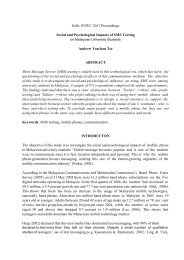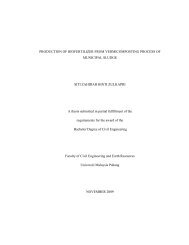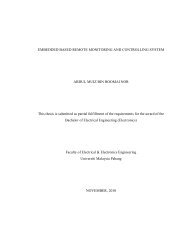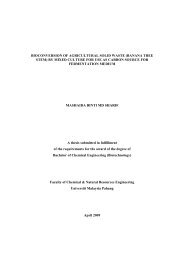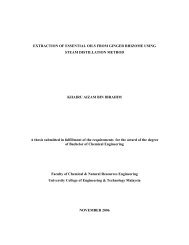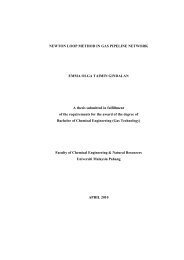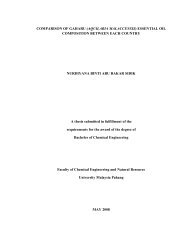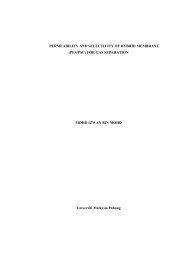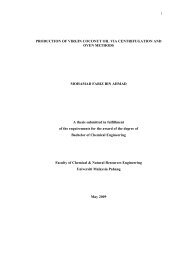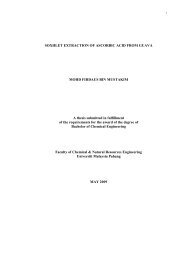CHAPTER 1 - Universiti Malaysia Pahang
CHAPTER 1 - Universiti Malaysia Pahang
CHAPTER 1 - Universiti Malaysia Pahang
Create successful ePaper yourself
Turn your PDF publications into a flip-book with our unique Google optimized e-Paper software.
2.2 Polypropylene Composites<br />
2.2.1 Properties of Kenaf/Polypropylene Composites<br />
Combining kenaf fiber with other resources provides a strategy for producing<br />
advanced composite materials that take advantage of the properties of both types of<br />
resources. It allows the scientist to design materials based on end-use requirements<br />
within a framework of cost, availability, recyclability, energy use, and environmental<br />
considerations. Kenaf fiber is a potentially outstanding reinforcing filler in<br />
thermoplastic composites. The specific tensile and flexural moduli, for example, of a<br />
50% by volume of kenaf-polypropylene (PP) composite compares favourably with a<br />
40% by weight of glass fibre-PP injection molded composite. Results indicate that<br />
kenaf fibres are a viable alternative to inorganic/mineral-based reinforcing fibres as<br />
long as the right processing conditions and aids are used, and for applications where<br />
the higher water absorption of the lignocellulosic-based fibre composite is not<br />
critical.<br />
From this study it is discovered that natural fibres are a potential replacement<br />
for inorganic fibres. (Roger M. Rowell et al., 2007)<br />
2.2.2 Tensile strength of elephant grass fibre reinforced<br />
polypropylene composites<br />
The main objective of this paper was an Elephant grass fibre(Scientific name:<br />
Pennisetum purpureum), is identified as potential reinforcement for making<br />
composites. Elephant grass fiber reinforced polypropylene matrix composites have<br />
7



